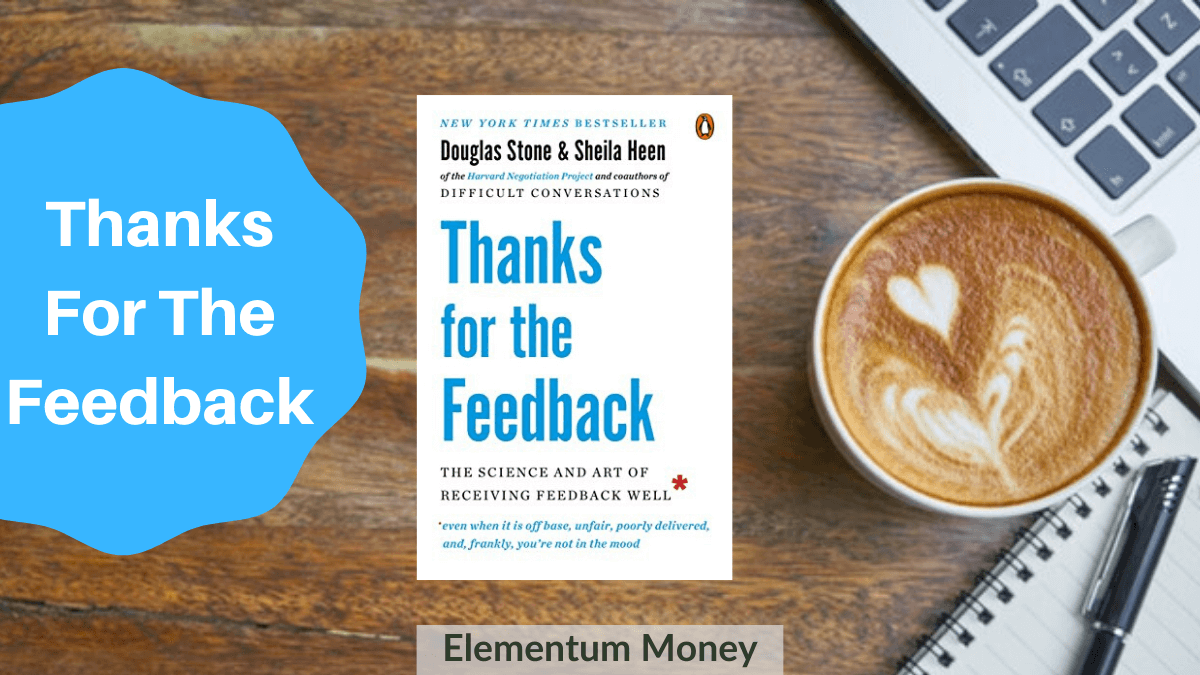Well well well! I haven’t been particularly productive this year. Sometimes the easiest place to get this stark feedback is for me to see my blog publishing history here in 2019. The last book babble post that I published was almost two months back, and that too for a book I did not enjoy that much! If I negate that, then the last good, well-detailed book post that I did was almost 3 months back! The only silver lining is that my reading has not gone down to such levels as a lot of fiction has wriggled and found it’s way into the nooks and crannies of my reading life. More on that next month when I do this year’s edition of My Year in Books.
The reason I mentioned the fact that the blog gave me “feedback” about not being productive this year was to subtly ensure that this time’s book finds it’s way into the post right in the beginning. While I had read the book some time back, considering it was so rich in its’ learnings, distilling it and putting it all out in my voice took its’ own sweet time considering the lazy slump I have recently found myself in. So, before I get carried away with my self-berating rant (for which you might need to wait for the year-end post), let’s move right on to the book – Thanks for the Feedback.
About Thanks for the feedback
A few months back, I was browsing my way through the American Library, looking for good options to dig into. I landed upon this book and somehow it spoke to me and without going to my usual action of checking for the Goodreads rating, I picked it up. The book comes from authors Douglas Stone and Shiela Heen, best known for the Harvard Negotiation Project, which is a meeting ground for theorists and practitioners on the subject of negotiation.
When I think of my nine and a half years of work experience, I can literally point to a few key watershed moments, associated with feedback which hit me hard. When I read the book, there were a lot of those déjà vu moments where I was literally transported back, especially to the two hardest hitting feedbacks received from my bosses. I remember holding on to them close to my heart, feeling shattered and living my life through that lens for months. I am not joking here. Interacting with them in the immediate future, my stiff body language and the way I approached everything thereon made it clear to them that I was still holding on to that feedback.
In that matter, this book has been enlightening. It is enriching, scientifically backed and comes with truly actionable areas. My hope is that, as I write my thoughts from the book, it also helps to deeply imbibe them to receive feedback much better. As the book mentions rightly, one, you cannot avoid feedback and two, when taken in the right spirit it can help you grow as a person.
While the subtitle of the book mentions “The Science and Art of Receiving Feedback Well”, as I read the book, it was clear to me that the book is very helpful in improving your skills as a feedback giver as well. Finally, feedback includes two parties and improving yourself in both those areas is bound to help you evolve. In fact, while receiving feedback well help grow your own self, the art of properly giving feedback can go a long way in nurturing relationships.
As for receiving feedback, I think the authors say it best:
Receiving feedback well doesn’t mean you always have to take the feedback. Receiving it well means engaging in the conversation skillfully and making thoughtful choices about whether and how to use the information and what you’re learning. It’s about managing your emotional triggers so that you can take in what the other person is telling you, and being open to seeing yourself in new ways.
Thanks for the feedback, Douglas Stone & Shiela Heen
Three types of feedback
The first point at which the book struck me was the vivid distinction it made in the three strands of feedback.
Appreciation
Let’s admit it, this has to be one of the easiest to receive, right? In some ways, the challenge here is the dearth of people giving it. How many relationships flounder in the absence of appreciation for the small things that we end up taking for granted? This is true for personal and professional relationships. Yes, working on some weekends might be required to get a job done but some appreciation from your boss would go a long way. Also, appreciation has different forms and giving it in the way that the receiver understands and feels that warm glow is an art in itself.
Coaching
The main aim of coaching is an attempt at improvement. This could be at the request of a mentee or it could come involuntarily from a superior who sees a gap or room for improvement. Either way, coaching is meant to help in an individual’s growth.
Evaluation
This is obviously the bedrock of feedback and also the most difficult to digest. Most evaluation is relative and meant for course correction. The fact is also that a lot of evaluation comes from the cloak of judgement. Mastering the art of receiving evaluation is a key skill in understanding yourself better as well as in a constant process of improvement.
Three type of triggers
Why do we so often react to feedback poorly? What are the kind of emotions and reactions that it ends up triggering, be it at a superficial level or at a deep level? The authors neatly divide these triggers into three broad categories. While the book goes in depth into all of these with well-thought out and very relatable examples in the personal and professional spaces, I will keep these short to just give enough of a taste to make you want to read the book.
Truth Triggers
Truth triggers looks at a lot of facts around the event of the feedback as well as the receivers’s evaluation of the facts in the content of that evaluation. Confused? Let me dig into the three aspects the authors talk about which will make it clear:
Separate the type of feedback
One of the key responsibilities of a good boss is to coach the team. However, imagine you go into a meeting expecting to get ideas on how to improve but end up being told everything you are doing wrong and lagging behind the team. Or maybe this comparative way is your boss’s idea of telling you how to improve. Either way, it is easy to tangle those wires. As suggested by the author, it is a good idea to lay down the objective of the feedback session before commencing into it. Of course, this asks for more structure than a lot of off-hand ways we often get our feedback and as a receiver it then becomes your imperative to clarify the objective of the feedback. But, then, this is where you can amp up on your skill as a feedback giver as well by clarifying the purpose and objective behind the feedback before going into it.
First understand
This was a very vital chapter for me. I have often frozen and been too intimidated to try and peel back the layers behind the often toxic feedback spewed at me. In some ways, peeling layers from feedback is also something I am working on in my personal life. So, when my husband tells me I am stuffing in too many things in my time, is it a concern for my running myself ragged or is it an accusation that I am not spending enough time with him? As the authors point out, sometimes feedback givers can bunch up things in very simplistic labels which could mean something completely different to the receiver. Again, as giver and receiver, digging deeper and going beyond labels, probably to backing anecdotes can be helpful. Also, remembering the below insight, which blew my mind when I read it, would also prove helpful:
It is said that all advice is autobiographical, and this, in part, is what is meant. We interpret what we see based on our own life experiences, assumptions, preferences, priorities, and implicit rules about how things work and how one should be. I understand your life through the lens of my life; my advice for you is based on me.
Thanks for the feedback, Douglas Stone and Shiela Heen
See your blind spots
How we see, perceive or hear ourselves can often be discordant from how others around us do the same. We often do not realize how much, often unintentionally, we communicate through our facial expressions, tone of voice and sometimes even the action patterns that we undertake. I also think that we often believe that we are the same type of person in different aspects of our lives. We might like to believe that we are caring and nurturing, because that’s how we behave with our children. But, the story could be vastly different at our work place where we are probably the boss from hell. When you get feedback that you find disturbing or inconsistent with how you view yourself, try to recall if you have heard it before. Also, taking a second opinion with an honest friend who operates in the same space could also help get a reality check.
Relationship Triggers
Often the feedback that we get triggers reactions and emotions not because of the feedback but thanks to who is giving that feedback. It is the relationship between the giver and the receiver that determines how the conversation might go. I thought this is something that was likely to erupt more in relationships that have a longer leg of life to stand on because the trigger is based on the relationship history.
Don’t switch track
This is definitely a relationship classic, especially in married couples. How many times have you seen couples dance the same dance, fight the same issues and quote the same instances? Essentially, in this kind of a feedback mechanism, one person gives feedback to the other. Considering offence is the best defence, the other person digs out a much complained-about issue of the other person. Both of them are then on their own divergent train of thought and track of accusation without paying heed to either. As the authors suggest, either stay on track with the initially raised issue or address both issues but separate out the confusing threads first.
Identify the relationship system
Honestly, this was one complicated chapter where the authors recommend taking three types of views of the relationship from differing heights and angles. While insightful, I do believe the authors are bound to do a far more credible job at explaining what they mean and I will leave this one here.
Identity Triggers
Out of the three buckets, this one is probably my favourite. Identity, as the authors put it, is the story we tell ourselves about us. When we get feedback, which feels contrary to our identity, we are disturbed. How we receive that feedback also hinges quite a bit on some key aspects of our identity.
Wiring & temperament
Hands down my favourite chapter probably because it inculcated a bit of neurobiology and one of my discoveries this year has been an innate interest in neuroscience. There is a lot of good stuff in the chapter but I will keep it to the bare basics of the three pronged baseline-swing-sustain & recovery model. Baseline essentially means that all of us have a regular level of happiness or despair. There are some people who end up seeing the negative in anything while some who manage to turn around almost anything into a positive opportunity. In some ways, swing is like volatility. Are you stable on your baseline, or you swing high and low depending on what is happening around and to you? For all personal finance fans, better to be debt in this case than equities (As a PF nerd, couldn’t resist this joke). As for sustain and recovery, how long do you sustain the wounds or even the highs of a good thing? How easy is it for you to recover from a challenge? These three aspects, in some ways, are also reflective of the self-confidence and faith with which we are operating. Is it all fixed in stone? As per research, not really:
Research suggests a 50-40-10 formula for happiness. About 50 percent of our happiness is wired in. another 40 percent can be attributed to how we interpret and respond to what happens to us and 10 percent is driven by our circumstances – where we live and with whom, where we work and with whom, the state of our health and so forth.
Thanks for the feedback, Douglas Stone & Shiela Heen
Dismantle distortions
We often end up taking the feedback more than on mere face value, happily letting it bleed into all areas of our lives. Our brains happily collude with our emotions to help distort feedback we don’t like. While the authors give 5 suggestions to help dismantle possible distortions, trying to see the whole situation as a third party observer was probably the most whimsical yet also must promising to me. Especially when they gave the suggestion of casting the situation in your head as a comedy. While the authors mention how being able to see humour is about getting perspective, I could also be biased for being a sucker for humour. In the same aspect, the idea of looking at the situation from a future lens also works for me. Just thinking how big can this be anyway in determining my future, often makes something more bearable for me.
Cultivate a growth mindset
This is not the first time I have heard about fixed and growth mindset. Essentially, stop thinking of aspects and traits about yourself being unchangeable. Embrace growth and continuous learning. Once you do that, it is possible to see a glimmer of opportunity in feedback. Since my colleagues don’t really read my blog, I think I can talk about an instance here.
Recently, I had been hearing a lot of people talk long threads of praise for a colleague of mine doing the same work as me for a different set of clients. As usual, I called my husband to lay my woes at his feet. Thankfully, he heard me out and told me I could choose to be unnecessarily insecure or check for what he does better and if I feel the need to imbibe it. In the end, in some ways it has turned out to be a much needed wake up call for me to go deeper into my research on the products and my recommendations and I am happier about it. What also helped me was to realize that I am one year into this role whereas the said colleague has probably spent more than a decade doing this and I was bound to glean some wisdom from what he does different.
This is not all. The book also talks about where to draw the line in taking feedback and some more ways to clear communication for what can easily be a thorny interaction. If you believe, like I have come to, that feedback is a vital aspect of life and giving and receiving it graciously to utilize it in the best way possible is important, then this book is a must read. As for the title, to anyone who takes the pain and effort, you obviously have to say – Thanks for the Feedback!
Have you read the book? Has feedback ever hit you hard where you took time to get over that punch? Let me know in the comment below.





Leave a Reply